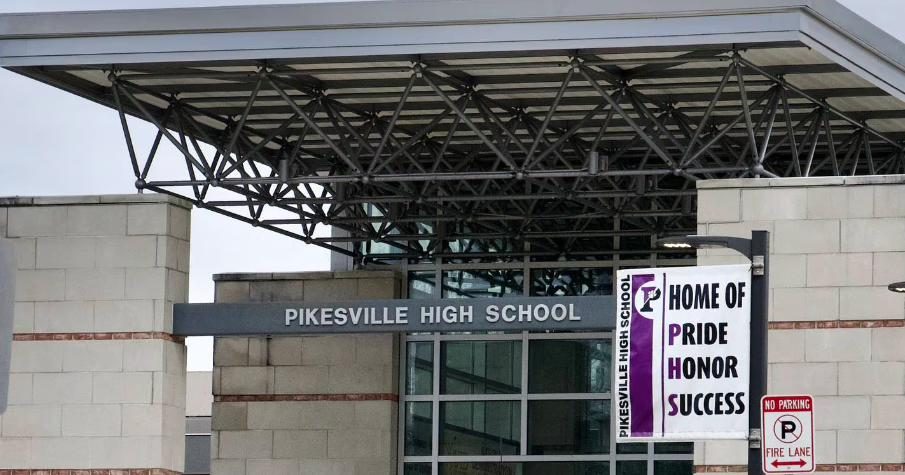Rare Sightings At Annapolis, Gibson Island Bird Count
ANNAPOLIS, Md. (AP) -- As a pair of snow buntings perched atop a picnic table Sunday at Sandy Point State Park, a half-dozen birders excitedly raised their binoculars and peered through their spotting scopes.
The buntings had flown to the sandy shores of the Chesapeake Bay from the Arctic, migrating south for warmer temperatures.
Seeing them at Sandy Point was a rare treat, the birders said. They hadn't been spotted during the annual Annapolis and Gibson Island Christmas Bird Count since 2007.
"They're beautiful," said Marcia Watson of Bowie.
The bird count, held by the National Audubon Society and Anne Arundel Bird Club, took place for the 61st time Sunday.
Approximately 80 people participated, spotting at least 112 species. It was the second highest total in the history of the event.
"It resulted in lots of good birds," said organizer and Anne Arundel Bird Club member Hal Wierenga.
The National Audubon Society began holding annual Christmas bird counts 115 years ago. This year's event began Dec. 14 and ends Monday.
Birders are tasked with spotting and documenting as many birds as they can within a 24-hour timespan. The data is collected and used by scientists who study how birds are faring over time.
Many who participated in the Annapolis and Gibson Island count, including Watson, have backgrounds in biology and ornithology - the study of birds.
"It's fascinating to see the number of species that use a particular habitat," Watson said.
As the buntings sat on the table, a peregrine falcon perched on the Sandy Point Shoal Light. At least three species of gulls walked on the beach. A group of four sanderlings, which hadn't been spotted during the Christmas count since 2002, were near the water's edge.
The star of the day, however, was a raven, spotted by Gene Scarpulla of Bowie. The bird had never been spotted during the 61 years of the event.
Scarpulla saw the bird early Sunday afternoon, but wasn't certain it was a raven, so he asked Watson to keep an eye out for it. She saw it a short time later and confirmed it was a raven. Scarpulla then went back and took its picture.
While photos of birds aren't necessary for every bird, they do validate rare sightings.
"You want to get a witness if you can," Scarpulla said. "If you can get a photograph, that's even better."
The secret to spotting rare birds, Scarpulla said, is "mindless persistence."
"You have to look at every bird," Watson added.
Birders went to their areas within the 15-mile Annapolis and Gibson Island territory early Sunday morning and stayed until early evening. They gathered Sunday night to tally the number of birds and species they had spotted.
The most birds ever spotted during count was 454,000 in 1983. The lowest amount was 21,000 in 1960. Last year, nearly 63,000 birds were spotted.
The most species ever spotted during the count was 117 in 1975. The lowest was 79 in 1967. Last year, 109 species were spotted.
Organizers also keep track of the amount of people who are spotting, the total amount of hours spent spotting, how many miles were covered while spotting and other information, including weather conditions.
"It's all about citizen science and data collection," said Anne Arundel Bird Club member Lynn Davidson, who was excited to spot two red-breasted nuthatches.
Wierenga was impressed with the juxtaposition of the birds spotted during this year's event. While the snow buntings hailed from the north, spotters also saw brown pelicans, more common to the south.
"It's nice to have them both, kind of a combination of the north and the south," he said. "It was an interesting day."
Wierenga took part in the count for the first time in 1955, when he was 10 years old. Since then he said he has participated in every count except one.
Along with the scientific benefits, Wierenga also enjoys the social aspect, as birders gather to share their findings, tell stories and share a few laughs. And like others, he enjoys the thrill of spotting a rare bird.
"It's exactly like hunting," he said, "only you don't pull the trigger at the end."
Birder Dave Mozurkewich compared the count to a treasure hunt.
"It's exciting looking for them," he said. "You never quite know what you're going to find."
------
Information from: The Capital of Annapolis, Md.
(Copyright 2015 by The Associated Press. All Rights Reserved.)



